An all-star benefit concert celebrating the 50th anniversary of Fiddler on the Roof, its Pulitzer Prize- and Tony-winning lyricist Sheldon Harnick and the 100th anniversary of The National Yiddish Theatre-Folksbiene was presented June 9 at New York's The Town Hall. In honor of that event, several stars of Fiddler — on Broadway, on film, around the country and around the world — offered recollections of their time in the musical, which is based on the stories of Sholem Aleichem and features a book by Joseph Stein, music by Jerry Bock and lyrics by the aforementioned Harnick.
We revisit their memories on this anniversary day.
| |
 |
|
| Joanna Merlin |
Original Tzeitel, Fiddler on the Roof, 1964
I auditioned four times for Jerry Robbins' Broadway production of Mother Courage and Her Children in 1963. I didn’t get the role, but Jerry called me into his office in the fall of that year to talk about my auditioning for Fiddler on the Roof. I told him I was not much of a singer. I had only sung on a Broadway stage once and that was to play the lute and sing a Welsh folk song in Anouilh’s Becket with Laurence Olivier. Needless to say, I was more concerned about interacting with my scene partner than the quality of my singing. I told Jerry I did not have a trained voice and had never sung with an orchestra. He assured me that would not be a problem.
He wanted me to audition for the role of Hodel - a legitimate soprano! I went to a singing teacher to prepare for the audition and learned some songs in the soprano range. Shockingly, Jerry brought me back six times even though my vocals were hopeless, I felt quite embarrassed every time I auditioned. I knew I sounded terrible, but Jerry was determined to find a way to cast me. He arranged for me to work with Jerry Bock, the composer, and Sheldon on Hodel’s song, “Far From the Home I Love,” which I sang at my seventh audition. It was clear I couldn’t sing it. I knew it, Jerry and Sheldon knew it. Then Jerry Robbins did something unheard of for a Broadway director of his stature. He said he would come to my next voice lesson to hear everything I was singing. So, on a rainy day in November, we met at the studio of Carmine Gagliardi, my singing teacher, at 71st and Broadway. I sang several songs Carmine and I had worked on. When I finished singing a song from Irma La Douce, which was in an alto range, Jerry looked excited and said, “Sing that song at your next audition!” I was relieved as that range was less painful than my wavery soprano. At my eighth audition, I sang the song and Jerry and Sheldon (Harnick) shot up from their seats in the theatre and one or the other shouted, “She has a chest voice! She can play Tzeitel!”
That moment changed the course of my life. Not only was Fiddler historic, and an honor to be in the original cast, but I got to know Hal Prince, who produced Fiddler. The year after the opening, I had to leave the show because I was four-and-a-half months pregnant. The wardrobe department had reached their limit in letting out my wedding dress. Four years and two children later, Hal called me, out of the blue, and asked me to be his casting director. I cast the replacements for the last two years of the Broadway run of Fiddler. (Odd casting my own part!) Hal was in the middle of casting Company. This was the golden period of Prince-Sondheim musicals, and after completing the casting on Company, I did the original casting on Follies, Sweeney Todd, A Little Night Music, Pacific Overtures, and other shows including Evita. After 14 years with Hal, I began casting films for Merchant Ivory as well as for Bernardo Bertolucci’s "The Last Emperor." None of this would have happened if Jerry Robbins had not come to my singing lesson.
| |
 |
|
| Adrienne Barbeau |
Hodel, Fiddler on the Roof (Replacement, Original Broadway Company)
Fiddler on the Roof was my first Broadway show; the first job I had on stage that was going to last longer than a three-month summer-stock run. I signed a one-year contract. At the end of my first week in the show, I took my paycheck and my contract to the accounts department at Bloomingdale’s and applied for my first-ever credit card. They gave it to me. I was a working actress.
| |
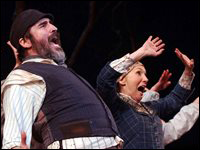 |
|
| Alfred Molina and Randy Graff |
Teyve, Fiddler on the Roof (2004 Broadway Revival)
On the first day of rehearsals for Fiddler, I reminded David Leveaux, our director, that he and I had met decades earlier when I attended a weekend workshop at the London theatre space he was the director of then. It was the Riverside Studios and I was there workshopping with Dario Fo, and a huge number of actors, directors, theatre enthusiasts, etc.
After the workshop had ended, David said to me that he thought it might be a good idea to get me to the Studios for a full production in the near future. I did not hear another word from him until the approach to do Fiddler with him some 20 years later. When I reminded David of his 20-year-old offer, he said, "Well, you see? It wasn't all hot air!"
| |
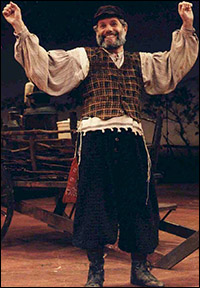 |
|
| Michael Burstyn |
Tevye, Fiddler on the Roof (Pioneer Theatre, Salt Lake City, UT)
My most memorable and unique production of Fiddler was when I starred as Tevye at the Pioneer Theatre in Salt Lake City, Utah. It convinced me that the Mormons think Fiddler was written about them! They identify so much with the Jewish tradition and the experience of the characters in the musical more than most other audiences, since their ancestors went through very much the same experiences.
It just so happens that Fyvush (Finkel) and I share much more than just Tevye and Lazer: We are two of the last surviving original members of the Hebrew Actors Union, the union of the Yiddish actors established in 1900, and the first performing artists union in America, of which I am now the president. My father gave Fyvush his first acting job on Second Avenue, when he was 18 years old. Fyvush attended my Bris (circumcision) in 1945.
| |
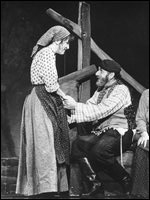 |
|
| Lori Ada Jaroslow |
Tzeitel, Fiddler on the Roof (1981 Broadway Revival)
Ensemble, Fiddler on the Roof (1991 Broadway Revival)
When I was 13 years old, I saw my first Broadway musical, Fiddler on the Roof. It was extraordinary because my father, Jerry Jarrett, was playing Tevye, not to mention Bette Midler, Tzeitel to Adrienne Barbeau’s Hodel. By then, my beloved aunt, Ruth Jaroslow, was already an illustrious Yente. Ruth is in the Guinness Book of World Records for playing Yente more than any other actress. And if that isn’t synchronistic enough, the second Broadway show I was in was… yup, Fiddler (as Tzeitel at Lincoln Center with Herschel Bernardi in 1981), directed by Jerome Robbins. I went on to do so many companies of the show, I’m not sure where they were and with whom! It was even more profound when ten years later, I found myself holding hands with, on the right, Aunt Ruth and on the left, my Dad, in “Tradition,” in the 1991 revival with Topol. Ruth was Yente, Dad was Avram and I covered and filled in for various Anatevkens.
Cut to 2014. I just completed directing my first production at a middle school in Los Angeles. I called Gary John La Rosa and Jimmy Ferraro, two friends who have directed innumerable productions, every five minutes with questions like, “Does she bring in the bucket before or after she moves the house?” Even while directing a Tevye who has not yet had his Bar Mitzvah, I found myself sobbing while blocking Act 2 - Scene 8 – the packing scene. How lucky I am to be part of this magnificent show and legend.
| |
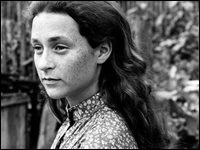 |
|
| Neva Small |
Chava, Fidder on the Roof (1971 film with Topol)
When I was cast as Chava at 17 years old, my parents told me that it would be my calling card forever. This has turned out to be so. Even today, I am delighted to receive emails from fans around the world! I could never have portrayed Sholem Aleichem’s Chava without the guidance of director Norman Jewison and musical director John Williams, among others. Their vision helped me to really personify Sholem Aleichem’s character from the page to the screen.
Once when Norman Jewison was directing me, he put on a babushka and did his own Chava to show me just what he wanted! I have the photo to prove it! And there was the time that Rosalind Harris, Michelle Marsh and I decided in order to stay in character we would not shave our underarms so that “Matchmaker, Matchmaker” could have that authentic special something—and once the camera rolled we heard, "CUT!" Norman Jewison sent us back to our dressing rooms. We then reshot the scene with a more “Hollywood” look.
I will always be indebted to John Williams, Sheldon Harnick and Jerry Bock who trusted me with the voice of Chava. Jerry Bock once told me that he channeled his Yiddish-speaking grandmother when writing the score. The melodies are also in my DNA, and I still love to sing the score.
Travelling to the former Yugoslavia was especially exciting. While on location, my next-door neighbors at the Hotel Esplanade in Zagreb—where we lived for five months—were Molly Picon and Yankel, her husband, who appeared in the film as an extra. Speaking of extras—while filming the scene when Fydeka exchanged a book with Chava—the extras were told to harass Chava while we filmed the scene. The young boys took the direction to heart and threw every Serbo-Croatian swear word at us. When the interpreter watched the dailies, she understood them and realized that the film would never get its G rating without dubbing! Let’s all celebrate the lasting legacy of this masterpiece!
| |
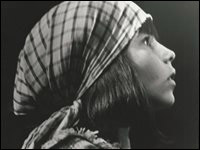 |
|
| Pia Zadora |
Bielke, Fiddler on the Roof (Replacement, Original Broadway Company)
In the scene where Tevye introduces his daughters to Motel, "This is mine, this is mine, etc.," and when it came to me-because I was the only non-Jewish daughter, he called me his shiksa, he would look at me and pause and say, "And this is mine?"
| |
 |
|
| Rosalind Harris |
Tzeitel, Fiddler on the Roof (Replacement, Original Broadway Company)
Tzeitel, Fiddler on the Roof (1971 film with Topol)
You might enjoy knowing that, in an ironic turn of events, I was on Broadway, understudying Bette Midler as Tzeitel, when she missed a performance….Hal Prince hadn't seen the show in a while, and had brought his son to see the show, and saw me portray Tzeitel.
He came backstage and thrilled me when he not only thanked me for my performance, but actually, right then and there, told me he would like me to take over the role, should Bette ever leave (in those years, the "understudy" never took over a lead role), which she did shortly after. In between that performance and Bette leaving, the United Artists film team came to town. Bette had auditioned for Tzeitel, though, they felt she was not exactly the Tzeitel they were looking for, and it was she who encouraged me to go down to the casting studio, without a scheduled audition, and be seen for the role. The rest, as they say, is history, for I was cast in the film, while still in the chorus on Broadway, and understudying Bette!!! Quite a miraculous turn of events!
While preparing to film the song "Matchmaker" in Zagreb, Yugoslavia, Neva, Michele and I had decided that to be "authentic" young girls of the period, we should let "all our hair grow out," as in Europe, women did not "shave." On the day of filming, we did a "run through," and, as all three daughters fell backwards onto the bed, to Norman Jewison's horror, he saw that we all had a huge amount of hair under our arms. He yelled out to the crew, "Stop the cameras!!"…..then, turned to us and said in a stern voice: "Girls…… go back to your hotel, right now, and ……SHAVE YOUR PITS!!!"
| |
 |
|
| Rebecca Hoodwin |
Golde, Fiddler on the Roof (1995 National Tour with Theodore Bikel)
Yente, Fiddler on the Roof (2009 National Tour with Harvey Fierstein)
In my first Fiddler on the Roof, I played Fruma Sarah, moved onto Shandel, and finally landed the role of Golde, at the tender age of 23. My Tzeitel was 24! It was then that I had to make peace with the fact that I would never play Hodel. And I am ever grateful for the many motherly journeys.
Sitting on stage warming up in one of the many cities on a Fiddler on the Roof tour with Mr. [Theodore ] Bikel, I remembered how I had always wished for five children, a cabin in the woods and a fantastic climbing tree. I was looking at the wooden house with the tree leaves coming up out of the roof and thought, “I should have been more specific.” Then, I happily rose and prepared to begin another journey with my five current daughters in preparation for yet another Sabbath. I am ever grateful for my many children from Anatevka.
| |
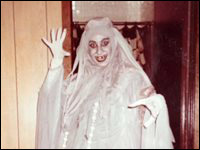 |
|
| Cheryl Stern |
Fruma Sarah, Fiddler on the Roof (1984 National Tour)
Chava, Fiddler on the Roof (1986, Pittsburg CLO)
Yente, Fiddler on the Roof (2014 Goodspeed Opera House)
1968: Debut performance when I stepped in for an ailing Tevye in the Buffalo Jewish Center Jr. production. 1972: Third babushka from the left in the Amherst Central High School production.
1984: Debut professional performance as Frumah Sarah in national tour starring Herschel Bernardi and Thelma Lee. Directed by Jay Harnick.
1986: Chava at Pittsburgh CLO starring Nehemiah Persoff with Judy Blazer, Randy Graff, Patrick Quinn, Bob Walton, Ruth Jaraslow and Thelma Lee once again. Directed by Susan Schulman.
2014: Yente at the Goodspeed Opera House starring Adam Heller and Lori Wilner. Directed by Rob Ruggiero.
I have a long-standing and special relationship with Sheldon Harnick. As a graduate of Northwestern University, I was always a huge admirer of this celebrated fellow alum!! My first show in NYC was Up in Central Park at Equity Library Theatre. To my surprise and utter joy, Sheldon came back stage after the show one night to introduce himself to me. He told me he was a big fan!! It meant the world to me, and he has continued to support me through the years as an artist. Last season I had the supreme pleasure of playing Mrs. Pomerantz in the Encores! revival of Fiorello! Sheldon and Fiddler are very near and dear to my heart, and I am beyond honored to be asked to participate in this landmark event!!!!
| |
 |
|
| Mimi Turque-Marre |
Hodel/Tzeitel, Fiddler on the Roof (Replacement, Original Broadway Company)
It was customary for a farewell party to be given to a departing actor at intermission, and our talented wardrobe mistress would present a doll costumed like the character he/she had been playing. I became pregnant while playing Hodel and was in denial about "showing" so very early. Week after week my costumes got suspiciously tighter, and I began to believe they were being washed in very hot water. At intermission at my last performance, I was given a beautiful Hodel doll, clothed in the green dress she wears at the wedding, and it had a distinctive bump. That's when I first realized how much I'd been "showing"! By the way, my "sister" Bette Midler arranged a beautiful shower for that baby who had been clearly announcing his presence on stage.
| |
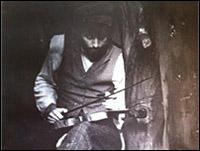 |
|
| Sammy Dallas Bayes |
Original Yitzuk, Fiddler on the Roof (Original Broadway Cast, 1964)
Ensemble, Fiddler on the Roof (1971 film with Topol)
Fiddler, Fiddler on the Roof (1976 Broadway Revival)
There is a movie called “Sliding Doors.” It follows one person who steps into a subway car and follows the direction her life takes from there on... Juxtaposed, that same person starts to step into the subway car, but for some obscure reason decides to catch the next train. That small decision completely changes her life’s direction from what it might have been stepping into the first subway car.
Hence my story: It was down to the final dance call for male dancers being considered for the original company of Fiddler. The line was down to a few more than needed. Jerome Robbins and assistant Tommy Abbott were in heavy discussion as to whom of the final two would be best for what was needed. I was one of the two being discussed. Robbins was leaning towards the other dancer. Tommy was leaning towards me. From what I was told their discussion became exasperating. Both myself and the other dancer had qualities that were right for what was going to be needed (we were two completely different dancers in shape, size and technical training), but there was only one spot left. Frustrated with the circumstances, Jerry threw his hands in the air saying, “Alright! Take them both.” Rehearsing at the Lyceum Theatre prior to going out of town I got permission from stage manager Jim Bronson to use the stage during lunch hour. I had hit it off with another cast member with the same background training as myself and wanted to work on choreography. (I wanted to do a concert of works once we returned to New York.) Oh yes, that cast member was Sue Babel, a wonderful woman with an incredible spirit! Upon return to the city, Jerry came to see a rehearsal of my concert. Afterwards we had a coffee while he critiqued my work. He told me he was familiar with how I worked. I asked, “How’s that?” He said he heard me talking to Jim Bronson about using the stage. He would go out the stage door come in the front of house, sit in the balcony and observe my work. This led to Jerry asking me to notate all the musical numbers for Frank Loesser’s Frank Productions (now MTI). I became entrusted by Jerry to stage first class productions wherever and whenever Tommy Abbott was not available. And after a year of working on the choreography book for Frank Productions, Frank Loesser offered me my first Broadway show as a choreographer, Canterbury Tales.
“Alright! Take them both.” Those words from Jerry Robbins were my “Sliding Doors.” I have had a wonderful career born out of those words. Celebrating this 50th anniversary of the show and creative team who gave it its birth is an absolute mind-boggling event. I am honored to be a part of it. Oh, by the way, that other dancer? Duane Bodin.
Thom Koutsoukos (written by Deborah Packer Koutsoukos, his wife)
Original Yakov, Fiddler on the Roof (Original Broadway Cast, 1964)
I put together some thoughts re: your suggestion for Thom to write something for this gala. It is difficult to speak for my brilliant husband because he was such a wonderful and articulate story teller. I could never hope to do him justice but as I have been hearing Fiddler stories since we first met more than 35 years ago, I can at least try to capture his words and his voice. I know that Fiddler was a life-changing and life-affirming experience for him, one that he spoke about over the years with great affection and humor. Everyone who worked with him or met him and found out that he had been in the original cast always wanted to know about it. Even Hershel Bernardi, when years later in the 80's, brought a touring Fiddler to Los Angeles (he was the second Tevye after Zero, as you know, and we were invited to a performance). He asked Thom, "Was it as good as you remember it?" For Thom, it was the joy of working with both Zero Mostel and Jerry Robbins that gave him the greatest sense of belonging to something special. He spoke eloquently about Zero's kindness to him during a particularly difficult time. Or, how during his numerous stints as Perchik, Thom would hear Zero affectionately taunt him on stage during numbers in an attempt to break him up. (Oops, you didn't hear me say that!) Or, the time Thom was walking down Broadway to the theatre only to suddenly hear screeching breaks and a booming voice yelling,"GET IN THE CAR! GET IN THE CAR!" Zero, of course. Or, the fascination of those Hasidic weddings that Jerry Robbins made them attend so that they could experience it firsthand.
Fiddler opened up an exciting new world for Thom, a far cry from his Greek Orthodox upbringing in the Chicago of his youth. And although Fiddler was Thom's second Broadway show (the first Oh Dad, Poor Dad… that Jerry Robbins directed), it was this show that gave him friendships that would last a lifetime and perspectives that for a curious, bright and open-minded young man, set his life's course in so many ways.
Thom went on to play many parts over the years, but he always referred back to his four years in Fiddler as the most meaningful of his life. That experience gave a more mature Thom the ability to portray Al Jolson years later in the first production of Michael Druxman's one-man show, Jolson, in Los Angeles (under the name of Thom Keane), and while he may not have looked or sounded so completely like Jolson, the audiences, many of whom knew Jolson personally (including Betty Garrett, whose husband Larry Parks had a difficult time working with Jolson during the filming of "The Jolson Story"), were overwhelmed by Thom's acting ability. How he seemed to capture the essence of a man who privately spoke with a lot of Yiddishisms. Thom probably knew more Yiddish than I did, and I was born into it! It was simply that beginning in 1964 that would continue to challenge and influence him in years to come. Interestingly, when Thom's mother died a number of years ago, it was a Yom Kippur service that he attended with me that gave him the most comfort. Thom would want to say hello to all who remember with him that endearing time, a special hello to the wonderful Hal Prince and a very special thank you and Happy Birthday to the amazing Sheldon Harnick.
| |
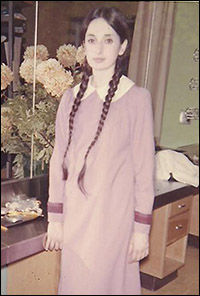 |
|
| Roberta Senn |
Original Anya, Fiddler on the Roof (Original Broadway Cast, 1964)
1. My audition story as reported in Alisa's book. My very first audition upon arriving in NYC was for Fiddler. I showed up for the audition (which was advertised as Russian Folk Dancing) dressed in my yellow skirt and red boots and my hair in braids. Everyone else had low cut leotards and fishnet stockings. Jerome Robbins watched me dance and told me that I was in the show. I am Russian Jewish, my grandmother lived in a shtetl, and Jerry built the whole show around my look. 2. The most fun was Maria Karnilova and I doing the barre onstage every night before the show. Also, Jerome Robbins loved me and treated me as a pet or as a muse for the show. Zero Mostel also treated me very sweetly. Zero and Jerry hated each other, and I loved them both so I was caught in the middle.
| |
 |
|
| Carolyn Mignini |
Sima, Fiddler on the Roof (Replacement, Original Broadway Company)
Unforgettable! It was raining the day I auditioned for Fiddler. It was my first and I was so thrilled to be backstage at an actual Broadway theatre that I couldn’t stop grinning. I had a pixie haircut and wore a short white jumper with a puffy pink blouse and white vinyl boots! How in the world I got the job, I’ll never know. Adrienne Barbeau and I became friends during the show. She and I and Bette Midler would meet onstage at the five-minute call and warm up, singing 50’s pop standards. We’d harmonize and rock out. It was great fun. Who knew we were part of something so timeless? We were just living the dream.
| |
 |
|
| Fyvush Finkel |
Mordcha, Fiddler on the Roof (Replacement, Original Broadway Company)
Mordcha, Fiddler on the Roof (National Tour, 1966)
Mordcha, Fiddler on the Roof (Broadway Revival, 1981)
When I signed to do the national company of Fiddler on the Roof, to me that was beginners luck. I was 43 at the time, and that was my first show that I was going to do in English. And naturally, I was chosen by Jerome Robbins and Harold Prince. So, we rehearsed it for three weeks but before we go out, on the fourth week, we must do a run-through, which every year theatrical casts would do that go on the road….so they can see how the audience reacts and how much business they can do. ...
So usually the run-through, you would have 100 people, 200, maybe 50 but the gypsy – they called it a gypsy run-through -- but it was actually a complete run-through with the actors. Everybody was watching: the scenic people, the director, the producers, the backers. So, with Fiddler on the Roof, people found out that I was going to be in it. My grocery man said to me, “Fyvush please, maybe, you know, we can’t afford tickets,” which in those days was $10 a ticket! Well, you know, to see Fiddler on the Roof, to them, that was something captivating, something that they must see because they lived through that…the people that lived in my neighborhood, in Brooklyn, at Crown Heights…
So, I said, “I’ll tell you what…if you can take a show with just tables and chairs and a piano player – naturally the cast will be there – then you can come down.” “How many people can I bring?” they usually asked. So, we were told by the management, “Bring as many as you want!” So I said, "Bring your family. It’s okay! Just walk in that day and that ends it.”
Well, now it’s time! We are getting prepared for the gypsy run-through! I figured, well maybe, 200 people will be there…a hundred. I wasn't alone…don’t forget it was a very big cast. We take a look: 1,800 people came to that gypsy run-through to see Fiddler on the Roof with Luther Adler as the star, and the place was mobbed! And the ovations! And we couldn’t believe…and we got such a thrill with that performance. With the stage manager yelling out, “Blackout! Act One! Act Two!” The excitement that we had in the audience…that was the highlight of the four years that we went on tour with Fiddler on the Roof! ... That run-through we did for the actors and the public and for everyone involved in the show. And, we got ovations! Had we gotten those ovations in the theatre, my God, the show would have run another 20 years! We couldn’t believe it, I couldn’t believe it either. And, to me, that was the highlight, the highlight of not only being on the road…it was the highlight of my career – was that run-through!
And, after we finished, Harold Prince, the producer, came over to us, he says, “What am I spending money for scenery for? We could have done this show with tables and chairs and only a piano!” He said, “Take a look what was happening here this afternoon.” Even he was raving about that run-through. Raving! And I didn’t blame him a bit, by God. And actually, on the road, those were the ovations that Fiddler got in 1966 on to 1970.
| |
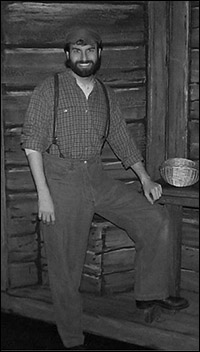 |
|
| Mark Sanders |
Perchik, Fiddler on the Roof (2000 National Tour with Theodore Bikel)
There is truly nothing like the Fiddler family. During the 2000 national tour, I fondly remember the nights the cast and crew would gather to hear Theodore Bikel play his guitar and sing. You could hear a pin drop as he sang his signature song, “Edelweiss,” as no one else can. The incomparable David Masters would constantly entertain us with his vaudevillian energy…truly “one of the greats.” We were a family on, and off, the stage.
One show in particular that stands out was during our week at the Kravis Center in West Palm Beach. It was during a local musicians’ strike, and the actors were expected to “go on with the show” with only two pianos. So, as the curtain rose, the audience was met with the silhouette of the Fiddler, only to hear a single piano doing its best to mimic that sound synonymous with the opening of the show. Theo wore a black armband in solidarity. The story was still told and the songs still sung, but it just wasn’t the same. Not until Sheilah Walker was able to step back onto the podium and conduct the glorious orchestrations that our Fiddler family was once again complete. No other show compares to Fiddler on the Roof, and I am blessed to be part of it all.
| |
 |
|
| Donalyn Petrucci Shreve |
Hodel, Fiddler on the Roof (Broadway Revival, 1981)
I was cast as Hodel after the entire company had already been in rehearsals for two weeks. That said, as well as being Italian Catholic, I had a lot of catching up to do. I began rehearsal where all the daughters are in the house and Papa comes home, so all the daughters go running out of the house to greet him. Sounds simple enough. So we begin and off I go running out of the house and Jerome Robbins yells, "Stop, Stop!" and he points his finger at me. "Dona, every time you enter or exit the house you must touch your hand to the Mezuzah. It's a constant reminder of God in our lives." My response, "Ooooohhhhhhh, OK, I get it." So, off we go again. All the sisters are in the house..... Papa comes home ...... we all go running outside to greet him and Jerome Robbins yells, "STOP! STOP! DONA! " Totally surprised that he's pointing at me again, I said, "What did I do? I hit the Mezuzah like you said." He responded, "Yes, but then you made the sign of the cross after it!!!!!" And, so started my first day in Anatevka.
| |
 |
|
| Joy Hermalyn |
Rivka/Fruma Sarah, Fiddler on the Roof (Broadway Revival, 2004)
1. Fruma Sarah: From opening night to closing night, was the most exciting time in my professional life - it is truly one of the greatest entrances and exits in all of musical theatre, and I felt lucky to play her on Broadway. One day, Fruma with the 30-foot dress and train, flew up 30 feet into the air and couldn't find the ladder to hold onto and went spinning like a top for the entire sequence!
2. Jerry at the piano with Sheldon singing "Topsy-Turvy" for us very early in rehearsal - which was dug out of a trunk and tweaked, I believe, to use as a replacement for "The Rumor." It was as if time had stopped - listening to these two men, as if they just wrote the whole show, giddily singing back and forth to each other this song of complaint and resignation - we knew we were small cogs in this incredible universal wheel. It was such a thrill to sing in that piece every night as no one could sing along!
3. Our many cast members over the two years were truly a family - the pogrom and then the heartbreak of leaving after Anatevka played an enormous part in bringing the actors who were the "Jews" and the "Russians" even closer together in life.
4. As a Jewish mama myself, I always felt connected to the plight of Anatevka - I recently spoke and presented the "Breaking of the Glass" ritual at the wedding of Craig Ramsay - an original Russian in our show, for whom the wedding scene resonated and his now husband, Brandon Liberati. It was easy to find the parallels in the struggle of the Jewish people and the struggle for Marriage Equality. At its core, Fiddler is about human rights and freedom - in its 50 years it is still telling the tale and hoping for change. But in the meantime we suffer!
| |
 |
|
| Gary John La Rosa |
Ensemble, Fiddler on the Roof (Broadway Revival, 1990)
Ensemble, Fiddler on the Roof (National Tour with Theodore Bikel, 1996)
Ensemble, Fiddler on the Roof (European Tour, "Anatevka")
It was my first Broadway experience as a child, and I made my Broadway debut performing in the show (sharing a dressing room with my "Tevye," Jerry Jarrett) 25 years later. Over the years, I have been involved in dozens of productions and have been humbled to have all the creators see my work on it. I am amazed by its unique emotional power on an audience and delight in how it continually threads through my life and career.
| |
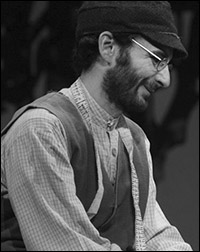 |
|
| Erik Liberman |
Motel, Fiddler on the Roof (National Tour with with Topol; Theodore Bikel; Harvey Fierstein)
When my grandparents told me stories of surviving pogroms, I had no understanding of them; they were just folklore. Fiddler awakened my connection to that ancestry while allowing me to honor my grandparents' memory. I must be the only person on Earth never to have seen a production of Fiddler before doing it [on the 2009-2010 North American tour] — so working with Topol, Harvey Fierstein and Theodore Bikel was a true "master class" in unlocking this brilliant material.
Marsha Meyers
2nd Chava of the First National Tour I was 19—almost—and my life was on target. I had graduated from the High School of Performing Arts two years before and just graduated from the American Musical and Dramatic Academy. It was the custom then to go to the stage door of a theatre you thought you had the most chance of being seen for and give them your picture and resume. This was to be deposited in the hands of the stage doorman. He, in turn, would give it to the stage manager, who, in turn, would give it to the office.
I approached the stage door of the Imperial Theatre. Sitting there was the generic old man who guards the theatre. I gave him my picture with my two-line resume stapled on the back. He looked at my picture, he looked at me. He said, “In your eyes I see the Royalty of Russia.” He said he would pass along my picture. For some insane reason, I decided to believe the old man and believe this would lead me to a role in Fiddler on the Roof.
It did. A few miracles later, I was reading onstage for Jerome Robbins, the director of Fiddler on the Roof. At the end, I waited for a response. From the seats I heard him yell. “Get the hair outta your eyes and we’ll read you again.” (I had worn my hair parted down the middle, and clasped at my neck. All us serious actresses were wearing it that way.)
I wandered offstage. Zero Mostel’s dresser was standing there. He took my hand and led me downstairs to the dressing rooms. He combed my hair back and into a braid, all the time regaling me with stories of Zero and the cast. With my “new hair,” I returned to the stage. I don’t remember what happened next. I just know I was called back again and soon cast as a daughter and Chava’s understudy.










